
Geoconservation Research
Scope & Guideline
Championing Open Access for Global Geoconservation Insights
Introduction
Aims and Scopes
- Geological Heritage Protection:
The journal emphasizes the protection and conservation of geological heritage, focusing on geological sites of significant scientific and educational value. - Sustainable Geotourism Development:
It promotes sustainable geotourism practices that leverage geological features for tourism while ensuring the protection of these resources. - Geoeducation and Public Engagement:
The journal supports geoeducation initiatives aimed at increasing public awareness and appreciation of geological heritage and conservation efforts. - Research on Geodiversity and Geoheritage:
It publishes research that assesses geodiversity and geoheritage, providing frameworks for their conservation and sustainable use. - Interdisciplinary Approaches:
The journal encourages interdisciplinary research that combines geology with ecology, culture, and social sciences to address conservation challenges.
Trending and Emerging
- Volcanic Geosites and Geotourism:
There is a notable trend towards exploring volcanic sites, with numerous papers focusing on their unique geological features and their potential for geotourism. - UNESCO Global Geoparks:
The journal increasingly emphasizes the role of UNESCO Global Geoparks as vital frameworks for geological heritage protection and sustainable tourism development. - Integrated Conservation Approaches:
Emerging studies highlight integrated conservation approaches that combine ecological, geological, and cultural perspectives for effective management of geosites. - Impact of Climate Change on Geosites:
There is a growing interest in understanding how climate change affects geological features and the implications for conservation strategies. - Community Engagement in Geoconservation:
Recent publications are increasingly focusing on the importance of community involvement in geoconservation efforts, recognizing local knowledge and participation as crucial for successful outcomes.
Declining or Waning
- Paleontological Studies:
While paleontological heritage was once a primary focus, recent publications indicate a reduced emphasis on paleontology in favor of broader geological and geoconservation themes. - Geological Education in Traditional Settings:
There appears to be a waning interest in traditional geological education methods, with a shift towards innovative and digital approaches to geoeducation. - Regional Geological Studies:
Specific regional studies on geological features have decreased, possibly due to a growing interest in global perspectives and comparative analyses across different geoparks.
Similar Journals
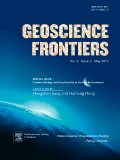
Geoscience Frontiers
Leading the Charge in Earth Science DiscoveriesGeoscience Frontiers is a premier open-access journal that has been at the forefront of disseminating impactful research in the field of Earth and Planetary Sciences since its inception in 2010. Published by China University of Geosciences, Beijing, this journal operates from the Netherlands and has gained recognition for its rigorous peer-review process and high standards of scholarship, earning a distinguished position as Q1 in the Earth and Planetary Sciences category. With a Scopus ranking of 5 out of 195, placing it in the 97th percentile, it reflects the journal's commitment to addressing global geological challenges and advancing our understanding of the Earth’s dynamic systems. As an open-access platform, Geoscience Frontiers ensures that vital research is widely accessible, fostering collaboration and innovation among researchers, professionals, and students alike. By providing a forum for cutting-edge discoveries and theories, the journal plays a critical role in shaping the future of geoscientific research and education.
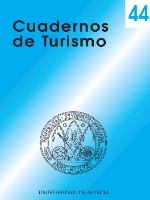
Cuadernos de Turismo
Advancing knowledge at the intersection of tourism and conservation.Cuadernos de Turismo is a peer-reviewed academic journal published by Universidad de Murcia, focusing on the interdisciplinary fields of geography, tourism, and environmental conservation. Since its inception in 1998, this Open Access journal has provided a platform for researchers, professionals, and students to share innovative research and insights in the domains of tourism, leisure, and sustainable landscape management. Leveraging its Q4 ranking across multiple categories in 2023, Cuadernos de Turismo stands as a crucial resource for exploring contemporary challenges and developments in tourism and its implications for regional planning and environmental conservation. With its commitment to accessibility and scholarly communication, the journal fosters collaboration and dialogue among scholars and practitioners globally, making significant contributions to the understanding and development of sustainable tourism practices.
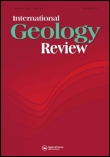
INTERNATIONAL GEOLOGY REVIEW
Fostering a deeper understanding of Earth's processes and materials.INTERNATIONAL GEOLOGY REVIEW, published by Taylor & Francis Inc, is a premier journal dedicated to advancing the field of geology since its inception in 1959. With its Q1 ranking in the field of Geology for 2023, this journal is a significant platform for researchers, professionals, and students exploring the intricacies of Earth and planetary sciences. The journal has been rated in the 81st percentile within Scopus rankings, reflecting its influence and the high quality of articles published. Although it does not offer Open Access options, the journal maintains a rigorous peer-review process to ensure the publication of original and impactful research. With an extensive archive projected to continue until 2024, INTERNATIONAL GEOLOGY REVIEW serves as an essential resource for those seeking to deepen their understanding of geological phenomena, making it a vital contributor to the global scientific community.

Visnyk of Taras Shevchenko National University of Kyiv-Geology
Advancing Geoscience Knowledge from Kyiv to the WorldVisnyk of Taras Shevchenko National University of Kyiv-Geology is a premier academic journal dedicated to advancing the field of geology and related earth sciences. Published by the esteemed NATL TARAS SHEVCHENKO UNIV KYIV, this journal serves as a vital platform for researchers, professionals, and students to disseminate original research findings, innovative methodologies, and comprehensive reviews that address contemporary geological challenges. With an ISSN of 1728-2713 and an E-ISSN of 2079-9063, the journal is committed to upholding rigorous academic standards and excellence, although it currently operates without an open access model. The Visnyk primarily focuses on topics such as mineralogy, geophysics, geological engineering, and environmental geology, thus providing a broad spectrum of insights into the ever-evolving discipline of geology. Situated in Kyiv, Ukraine, it not only fosters local research but also contributes to the global geological discourse, making it an indispensable resource for anyone engaged in earth sciences.
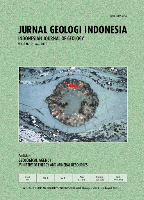
Indonesian Journal of Geoscience
Pioneering Research in Geoscience for Global Impact.Indonesian Journal of Geoscience, published by the GEOLOGICAL AGENCY, is a vital platform for sharing cutting-edge research in the field of Earth and Planetary Sciences. With an ISSN of 2355-9314 and E-ISSN of 2355-9306, this open-access journal has been making significant contributions to the geoscientific community since its establishment in 2013. Operating out of Bandung, Indonesia, the journal is dedicated to disseminating high-quality research across diverse areas, making it an essential resource for researchers, professionals, and students alike. Recognized in the 2023 Q2 category in Earth and Planetary Sciences, it currently ranks #134/195 among general Earth and Planetary Sciences journals in Scopus, reflecting its growing prominence and academic rigor. The journal seeks to foster scientific discussions by publishing original research, reviews, and case studies that address contemporary challenges and advancements in geoscience, thus contributing to a deeper understanding of our planet. With its commitment to open access, the Indonesian Journal of Geoscience ensures that vital research is accessible to a global audience, encouraging collaboration and innovation in the field.
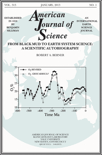
AMERICAN JOURNAL OF SCIENCE
Fostering Insights into Geological ProcessesThe American Journal of Science, published by the esteemed Amer Journal Science, stands as a leading platform for groundbreaking research in the field of Earth and Planetary Sciences. With an impressive impact factor and distinguished Scopus rank 34/195 in its category, the journal occupies a prestigious position in the academic community, reflecting its high-quality and influential contributions to scientific knowledge. The journal’s objective is to disseminate original research, comprehensive reviews, and critical discussions that advance our understanding of geological processes and planetary phenomena, supporting scholars and practitioners in their pursuit of knowledge. Despite its traditional publication structure, viewers can explore its rich repository of works dating from 1945 to present, offering a wealth of insights into the dynamic Earth sciences. The journal remains a vital resource for researchers, professionals, and students eager to engage with the latest scientific findings and foster further innovation in the field.

Carpathian Journal of Earth and Environmental Sciences
Connecting Knowledge for a Greener TomorrowCarpathian Journal of Earth and Environmental Sciences is a distinguished academic journal dedicated to advancing the interdisciplinary field of Earth and environmental sciences. Published by the Carpathian Association for Environment and Earth Sciences, this journal plays a pivotal role in disseminating high-quality research focused on the dynamic interactions between geological processes and environmental changes. With an ISSN of 1842-4090 and an E-ISSN of 1844-489X, the journal is indexed in Scopus and holds an esteemed Q3 quartile ranking in both Earth and Planetary Sciences and Environmental Science categories as of 2023. Since its inception in 2008, the Carpathian Journal has provided an open access platform for researchers, professionals, and students to share insights, foster collaboration, and engage in critical discussions on pressing environmental issues. By continuously contributing to the body of knowledge in this field, the journal not only enhances academic discourse but also promotes sustainable environmental practices across Romania and beyond.

Geoheritage
Celebrating the Earth's Legacy Through Interdisciplinary ResearchGeoheritage is a premier journal published by Springer Heidelberg, focusing on the interdisciplinary study of geoscience and its cultural significance. Established in 2009, the journal has quickly secured a prominent position in its field, reflecting its commitment to genuine academic inquiry and the dissemination of knowledge. With an impressive impact factor derived from its robust Scopus rankings – including a Q2 classification in Earth and Planetary Sciences, Geography, Planning and Development, and Nature and Landscape Conservation categories – Geoheritage provides a vital platform for researchers and professionals eager to explore and highlight Earth's geodiversity and heritage. The journal's scope encompasses numerous themes, including conservation practices, the role of geology in environmental planning, and the significance of landforms in culture. Although the journal currently does not operate under an open access model, it remains a crucial resource for those engaged in academia, environmental science, and cultural heritage studies, fostering invaluable discussions and insights that contribute to our understanding of Earth's landscapes. Its publication address is located in the heart of Germany, at Tiergartenstrasse 17, D-69121 Heidelberg, ensuring its connection to a rich geographical context.

Geopersia
Fostering Global Collaboration in Earth Science Research.Geopersia is a prominent academic journal published by UNIV TEHRAN, focusing on the interdisciplinary fields of Earth-Surface Processes, Geology, and Geochemistry and Petrology. With an ISSN of 2228-7817, this journal aims to disseminate high-quality research from 2017 to 2024, showcasing innovative studies that contribute to the understanding of geological phenomena. Despite the absence of an open access model, Geopersia maintains a significant scholarly presence, reflected in its categorization within the Q3 and Q4 quartiles in several related fields for 2023. The journal has garnered attention in the academic community, currently ranked in the 43rd percentile for Earth-Surface Processes and 41st percentile for Geology according to Scopus rankings. Researchers, professionals, and students are encouraged to engage with this valuable resource, which not only promotes comprehensive exploration of geological sciences but also fosters collaboration and discussion among experts across the globe.

Bulletin of the Mineral Research and Exploration
Unlocking Earth’s Secrets Through Open Access ResearchBulletin of the Mineral Research and Exploration, published by MADEN TETKIK VE ARAMA GENEL MUDURLUGU-MTA in Turkey, is a prominent open-access journal that has been disseminating vital research in the fields of geology and geotechnical engineering since 1936. With an ISSN of 0026-4563 and a commitment to sharing knowledge without barriers, this journal fosters an inclusive environment for researchers, professionals, and students alike. The journal is recognized for its contribution to the scientific community, illustrated by its Q3 ranking in Geology and Q4 ranking in Geotechnical Engineering and Engineering Geology for the year 2023. Despite its solid performance, the journal remains dedicated to improving its Scopus rankings, currently positioned at #230 out of 321 in Earth and Planetary Sciences for Geology, and #169 out of 229 in Geotechnical Engineering. The journal's historical convergence of years emphasizes its longstanding relevance and adaptability in disseminating cutting-edge research. By offering open access, it ensures that vital geological and engineering insights are readily available to a global audience, thereby enhancing collaboration and advancing knowledge in these crucial fields.